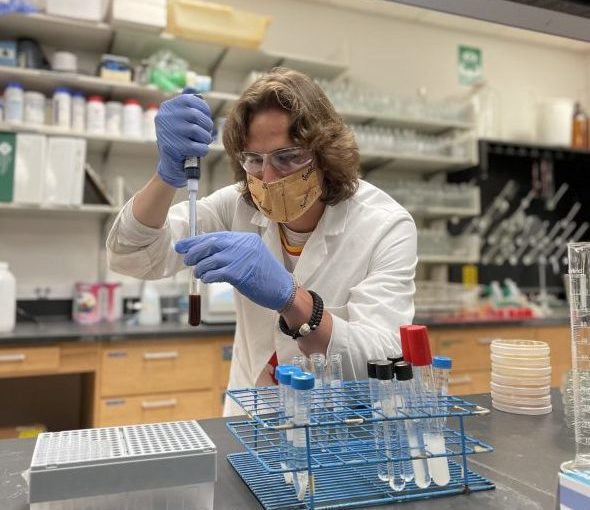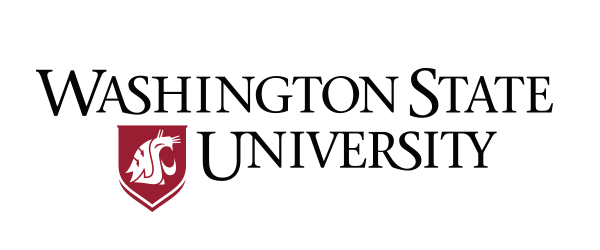May 25, 2021Wild Washington yeast may hold key to reducing sugar content in wine
Creating wine is a balancing act between the quality of harvested grapes and the types of microorganisms that ferment grape juice. Too much sugar during the fermentation process means too much alcohol in the final wine, which can negatively affect wine flavor.
Researchers from Washington State University’s school of food science are working with non-Saccharomyces yeast strains native to Washington to find a way to reduce sugar content before fermentation.
“We hope that if we find a way to reduce the sugar content of grape juice, winemakers can have a more predictable outcome for their wine,” said Jonathan Brumley, a rising WSU senior studying food science with an emphasis in fermentation.
“A recent challenge many winemakers have been facing is the higher sugar levels found in harvested grapes,” said Heather Carbon, graduate research assistant for the WSU School of Food Science.
More sugar means more food for yeast, which does not always yield better wine. Yeast creates alcohol by feeding on sugar, but too much can produce too much alcohol or leave left over sugar for spoilage microorganisms to eat.
Those microorganisms can sometimes cause strange odors and other problems that compromise the wine. The hope for this study is that a yeast species on grapes can consume some of the residual sugar without damaging the quality of the product.
“The secret of microorganisms is their ability to dramatically shape and change the flavors of wine, allowing producers to differentiate wines from one another,” said Charles Edwards, WSU professor and food scientist.


Historically, many of the native yeast species present on grapes were thought to be the cause of a spoiled batch of wine.
“We now know that some of these yeasts can be used to enhance wine quality, but without spoilage issues,” said Edwards.
“It’s been cool to get a look into the wine industry side of food science. Working with microbes fascinates me,” said Brumley, who plans to intern this summer with E & J Gallo Winery in Bellevue, Wash.
The team is trying different combinations of native yeast to find which combinations reduce the sugar content of grape juices during fermentation.
“We’re looking at what conditions are best for these yeast strains, what conditions they grow well in, and how to use that to the best of our abilities,” said Carbon.
Edwards said a big win for this project would be the discovery of a yeast strain that could be used like a tool, so winemakers could lower the potential alcohol content of their final wine during fermentation. This would be another way to help vintners keep the developed flavors of their wine consistent.
“Many winemakers use water to lower the alcohol content of wine, but having options in the winemaking industry is crucial,” he said.
This research is funded by Washington State University, Auction of Washington Wines and all Washington State wine grape growers and wineries through the Washington State Wine Commission.
The team plans to do larger ferments in the fall, with research results available next spring.
Discover more about the world of wine research in Washington state by subscribing to Voice of the Vine. Each e-newsletter issue features articles about the latest scientific discoveries, vineyard agriculture, and wine science research from Washington State University’s Viticulture & Enology program.















